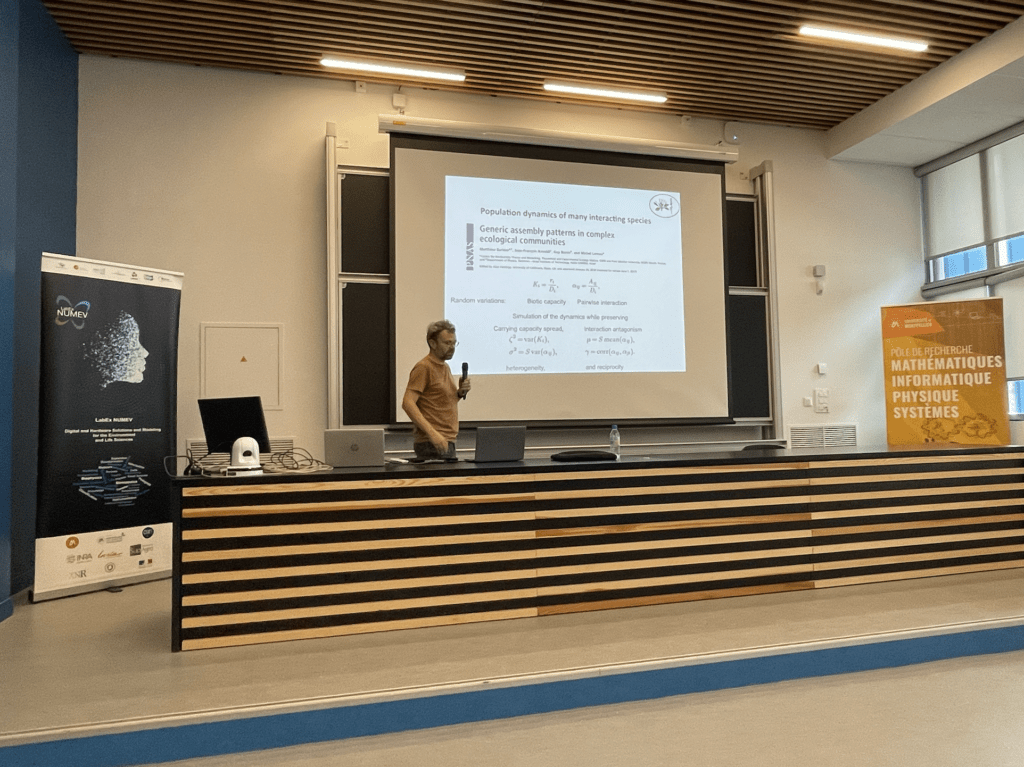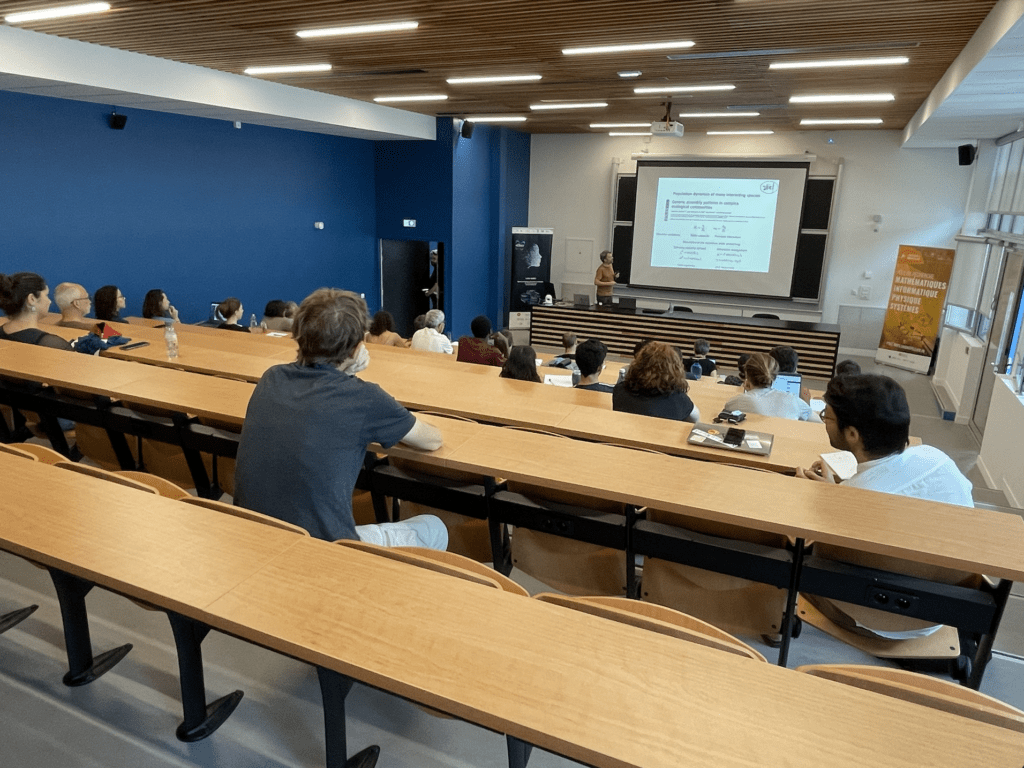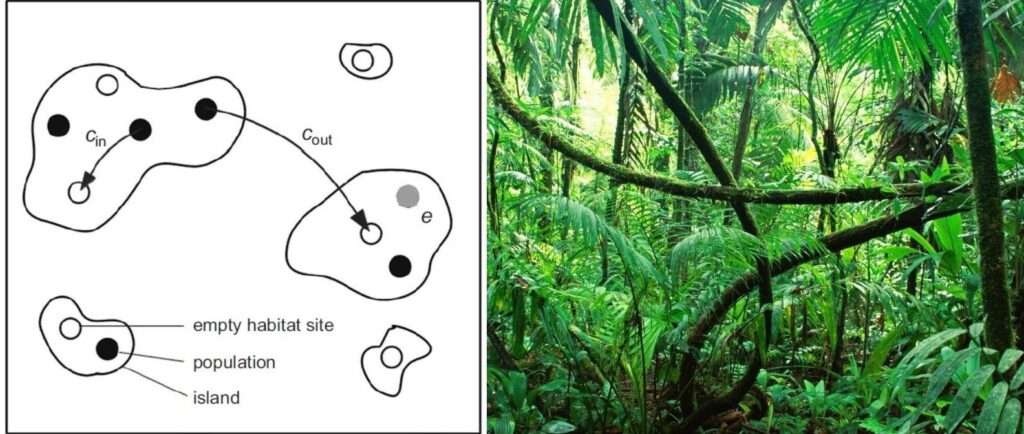Séminaire François Munoz : retour en images
Ce vendredi 7 juin, des membres de la communauté scientifique se sont réunis pour le 6ème Séminaire de l’année 2024, qui avait lieu, exceptionnellement, au bâtiment 20 – L2C du campus Triolet,
Le LabEx remercie chaleureusement François Munoz pour le séminaire donné.
François Munoz est professeur à l’Université Grenoble-Alpes, rattaché au laboratoire interdisciplinaire de physique à Grenoble (https://liphy.univ-grenoble-alpes.fr/en)
Le séminaire s’est suivi d’échanges puis d’un cocktail permettant aux membres de discuter et de rencontrer notre intervenant.



Modeling species population and distribution dynamics: challenges at the interface of physics and ecology
Predicting biodiversity dynamics in a context of environmental changes is a major challenge for science and society. Specifically, modeling the spatial distribution of populations, and investigating the impact of interspecific interactions on biodiversity patterns have been addressed both by ecologists and physicists since a long time. Different ways of modeling, including differential equation models, stochastic modeling approaches, and cellular automata, have been considered in both disciplines, but conceptual and practical obstacles remain to better understand biodiversity dynamics.
I will expose the ongoing dialogue between researchers from ecology and physics in the context of two kinds of ecological models, namely the metapopulation and the metacommunity approaches. The former investigates the probability of species population occurrences over a set of potential habitat units, making a spatial network over which colonization and extinction events occur. The latter considers whether and how many species can co-exist in the habitat units, depending on the nature and the architecture of their interactions.
I will conclude on some specific and concrete challenges for which pursuing and going deeper in scientific interaction between physics and ecology will be essential.

This is a Figure including two parts: on left a representation of colonization-extinction dynamics across habitat units (circles) within and between islands of varying size, and on right a picture of tropical forest including a huge number of species, to illustrate the challenge of understanding why and how many species can coexist.
The left figure is derived from a previous work with L2C (Huth, G., B. Haegeman, Estelle Pitard, et F. Munoz. 2015. « Long-Distance Rescue and Slow Extinction Dynamics Govern Multiscale Metapopulations ». The American Naturalist 186 (octobre):460‑69. https://doi.org/10.1086/682947), and the right picture can be freely used (CC0, https://en.wikipedia.org/wiki/Rainforest#/media/File:Chiapas_Rainforest_crop.jpg)
Retrouvez l’événement sur le site internet de l’UM : https://www.umontpellier.fr/agenda/seminaire-numev-mips-modelisation-de-la-dynamique-des-populations-et-de-la-distribution-des-especes-defis-a-linterface-de-la-physique-et-de-lecologie